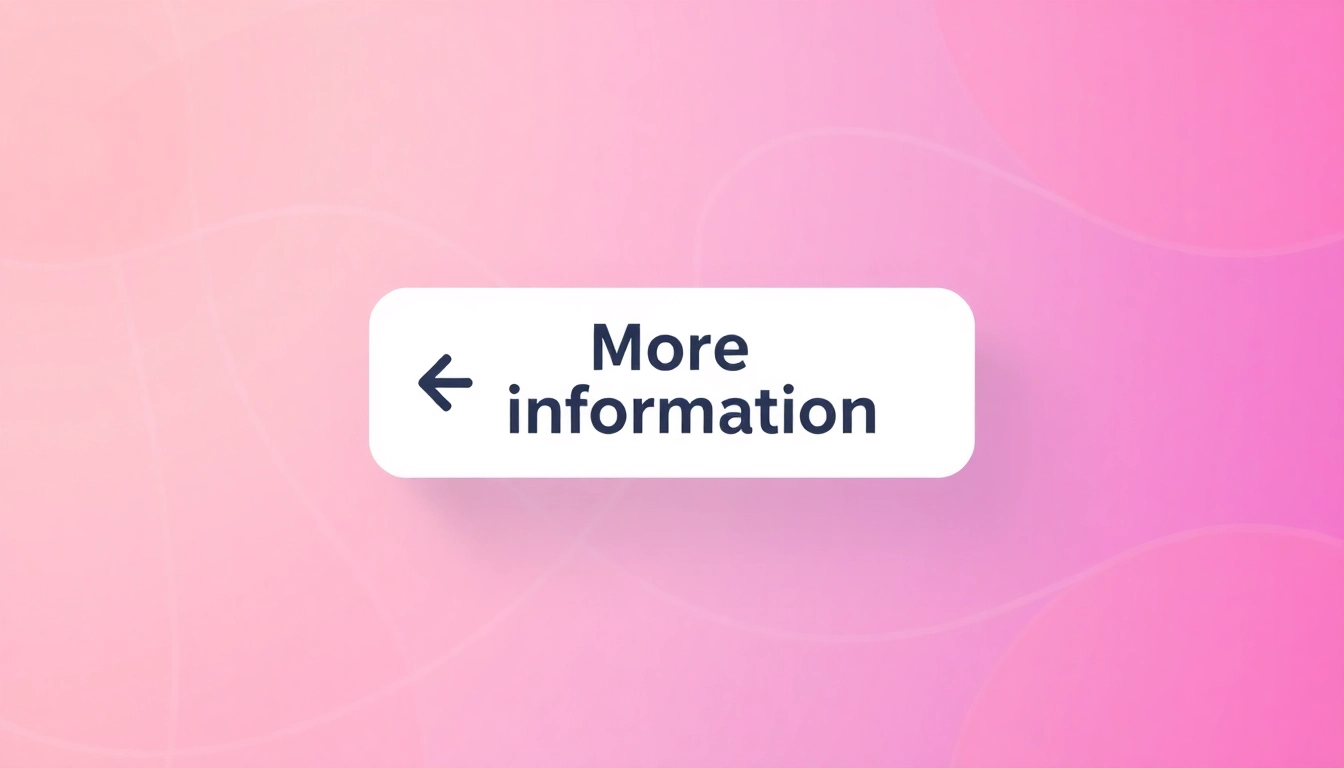Understanding the Need for More Information
In today’s fast-paced digital landscape, the phrase “more information” has become increasingly essential for users seeking clarity and depth on various topics. As consumers continuously navigate their way through an abundance of online content, the demand for concise and relevant information has never been greater. Providing more information not only enhances the user experience but also builds credibility and fosters trust in your digital presence.
Why More Information Matters in Digital Spaces
The digital realm is characterized by a wealth of information where users are prone to distractions from advertisements, pop-ups, and overwhelming content. In this environment, the ability to provide more pertinent information can significantly influence a user’s decision-making process. Offering insights that cater to a user’s needs not only drives engagement but also establishes a connection that transcends mere transactional relationships.
Common Use Cases for Requesting More Information
Various scenarios arise wherein users seek additional information—be it product details, service explanations, or educational content. For instance, e-commerce platforms often experience user requests for more detailed specifications about products before making a purchase. Similarly, educational institutions may receive inquiries related to course content and admission requirements. Understanding these triggers helps organizations anticipate user needs and respond effectively.
Impact on User Engagement and Trust
Incorporating robust informational resources can significantly improve user engagement. When users find accurate, detailed, and easy-to-understand information, they are more likely to return to the source, share it with others, and engage with related content. Trust is built through transparency and the willingness to provide comprehensive insights. Consequently, brands that prioritize informative content tend to foster loyalty, as users feel respected and valued.
Effective Strategies for Presenting More Information
Utilizing Clear Call-To-Actions
Call-to-action (CTA) buttons and links should be seamlessly integrated into the content to guide users toward further information. Effective CTAs are specific and actionable; for example, instead of a generic “Learn More,” phrases like “Explore Our Complete Guide” or “Get Detailed Specifications” can instigate more clicks and interactions. The clarity and appeal of your CTAs can substantially determine whether users take the next step.
Designing Accessible Information Layouts
When presenting additional information, the layout must prioritize accessibility and clarity. Broken-down sections, bullet points, and headers can make dense information more digestible. Consider using collapsible sections for FAQs or an interactive guide that allows users to navigate seamlessly between topics. The ultimate goal is to minimize cognitive load, allowing users to absorb and act upon the information effortlessly.
Incorporating Visuals for Clarity
Visuals play an essential role in enhancing the presentation of information. Charts, infographics, and videos can convey complex data in an easily digestible format. Implementing visuals not only enriches user experience but also makes the information more memorable. For instance, a well-crafted infographic summarizing key statistics can serve to clarify messages that may be overwhelming in text format.
SEO Best Practices Involving More Information
Keyword Optimization Techniques
Using the right keywords related to “more information” can drive targeted traffic to your website. Conduct extensive keyword research to uncover terms users are searching for in your niche. Incorporate these keywords naturally into your content, headings, and meta descriptions while ensuring they provide real value to the reader.
Measuring Success with Analytics
To evaluate the effectiveness of the information provided, tracking user engagement through analytics tools is fundamental. Monitor metrics such as page views, bounce rates, and average time spent on pages. Tools like Google Analytics can offer insights into how users interact with your content and help you refine strategies for better audience alignment.
Staying Updated with Search Engine Guidelines
Search engines constantly evolve their algorithms to prioritize user experience. Therefore, staying updated with industry guidelines, changes, and best practices is crucial. Follow official blogs and resources from search engines like Google to ensure your “more information” strategy remains compliant and effective. Regular audits can help in maintaining a strong foothold in search results.
Creating a Comprehensive More Information Page
Structuring Content for Clarity and Relevance
A dedicated “More Information” page can serve as a cornerstone of your website, aggregating all relevant details. Structure this content logically: start with an overview, followed by segmented sections addressing common queries, and include supporting links. A table of contents at the top can enhance navigability, allowing users to quickly find the information they require.
Engaging Users with Relatable Examples
Real-world examples resonate well with users. Incorporate case studies or testimonials that illustrate how your service or product has positively impacted others. This relatable content not only humanizes your brand but also establishes proof and builds credibility among your audience.
Updating Content Regularly to Improve Relevance
Information is dynamic; what may have been relevant yesterday might be outdated tomorrow. Regularly review and update your “More Information” page, removing obsolete content and adding new, pertinent insights. Not only does this practice enhance engagement, but it also signals to search engines that your content is fresh and worthy of ranking.
Tools and Resources for Efficient More Information Use
Leveraging Analytic Tools to Gather Insights
Tools such as Google Analytics, Ahrefs, and SEMrush provide robust analytics capabilities. Leverage these platforms to gain insights on user behavior and interaction with your information resources. Understanding how visitors interact with your content allows for data-driven decisions when optimizing for clarity and accessibility.
Best Platforms for Content Distribution
Selecting the right platforms for distributing your information is as important as the content itself. Social media, newsletters, and blogging platforms can serve as outlets for disseminating your insights. Tailor content for each medium; for example, a visually engaging snippet for Instagram versus a detailed article for your blog.
Integrating User Feedback for Improvement
Consistently seeking and incorporating user feedback creates a cycle of improvement. Utilize surveys, feedback forms, and site reviews to collect insights on what users think about your informational offerings. Incorporating this feedback into your strategy not only helps identify gaps but shows users that their opinions are valued, further enhancing trust.
